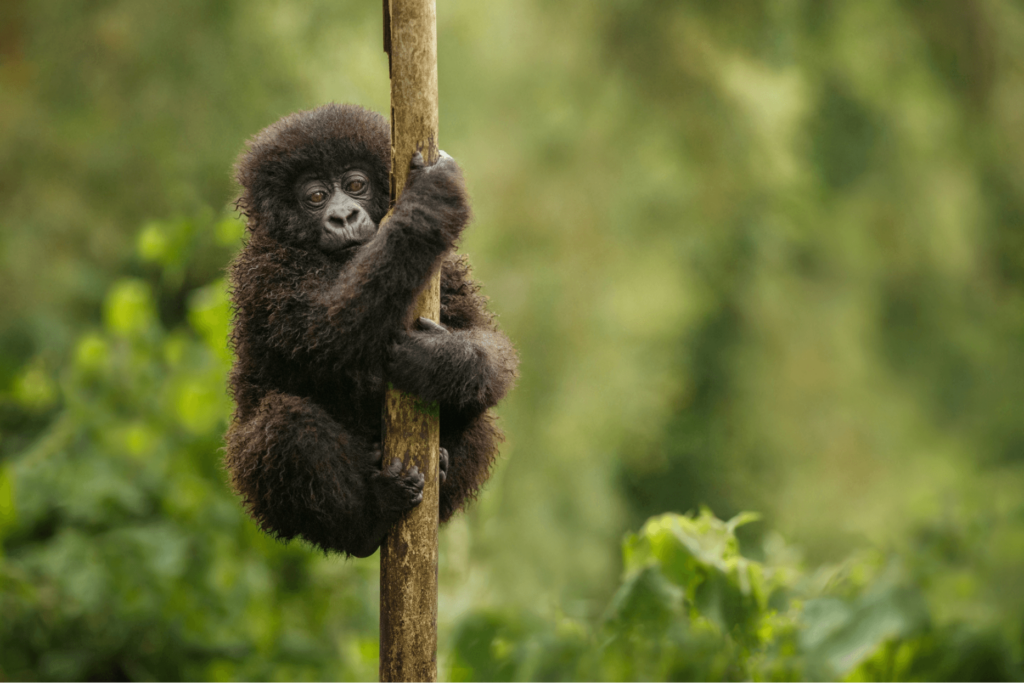Can Mountain Gorillas Climb Trees?
Can Mountain Gorillas Climb Trees? The mountain gorilla is among the most intriguing animals globally. Due to their resemblance to humans in both appearance and social structure, interactions with these large primates are considered some of the finest wildlife experiences. The mountain gorilla is one of the four species of gorillas native to Africa.
Can mountain gorillas climb? Unlike chimpanzees, which are lighter, mountain gorillas are terrestrial and spend less time in trees. Mountain gorillas predominantly inhabit the terrestrial environment and allocate about 5 to 20% of their time to arboreal activities. Mountain gorillas are larger than their primate relatives, chimpanzees, which predominantly inhabit trees. Chimpanzees allocate 47 to 67% of their time to arboreal activities, while orangutans predominantly remain in trees throughout the day.
Can Mountain Gorillas Climb Trees?
This, however, does not negate the reality that these colossal creatures ascend trees to obtain food or engage in playful activities among the branches. Mountain gorillas are substantial in weight and seldom leap from branch to branch or engage in branching activities. Notwithstanding their considerable size and weight, they typically ascend trees. Infant mountain gorillas spend more time in trees than adults, a behavior facilitated by their lighter weight, which the branches can support. The primary reason these young gorillas spend the majority of their time in the trees is for play. Silverback males seldom ascend from the ground due to their considerable weight. However, they will ascend high into fruit-bearing trees if the branches can support their weight.
Gorillas climb trees using all four limbs and, unlike other primates, do not employ their arms to swing from branch to branch. Mountain gorillas typically grasp tree branches and slender trunks with their hands and feet while climbing to secure adequate support.

Although mountain gorillas inhabit densely wooded regions in East Africa, they allocate minimal time to arboreal activities due to the scarcity of trees suitable for nest construction and the limited availability of fruiting trees in their environment.
Organize your gorilla trekking expedition to Africa with us and encounter the enchanting gorillas that will provide you with enduring safari experience. Contact our specialists immediately to tailor your journey to your preferences.
Which is preferable for observing gorillas, Uganda or Rwanda?
If you are still uncertain, the optimal response is that both locations provide exceptional prospects for gorilla trekking. Bwindi is superior for those seeking an authentic African rainforest experience, whilst Rwanda’s Volcanoes National Park excels in trek accessibility. In Bwindi, the inclines are precipitous and devoid of pathways, rendering gorilla trekking in Uganda unsuitable for the timid.
Are adult gorillas good climbers?
Due to the scarcity of suitable nesting and fruit-bearing trees in their area, adult mountain gorillas infrequently ascend trees. Conversely, adult western lowland gorillas frequently inhabit arboreal environments.
Are gorillas observable in Rwanda?
The response is affirmative; gorillas can indeed be observed in Rwanda. Gorilla trekking is exclusively available in Uganda, Rwanda, and Congo. In Rwanda, these primates are observable in Volcanoes National Park. it densely wooded regions in East Africa, they allocate minimal time to arboreal activities due to the scarcity of trees suitable for nest construction and the limited availability of fruiting trees in their environment. Organize your gorilla trekking expedition to Africa with us and encounter the enchanting gorillas that will provide you with enduring safari experience. Contact our specialists immediately to tailor your journey to your preferences.
